I took the supermarket flowers from the windowsill
I threw the day-old tea from the cup
Packed up the photo album Matthew had made
Memories of a life that’s been loved
Supermarket Flowers, by Ed Sheeran
Woven into the shape of footballs and butterflies, tied in bouquets, posies and sprays, flowers are an essential part of every funeral, from the most exquisite arrangement of orchids and lilies bound together with palm leaves, to the cellophane-wrapped roses hastily grabbed from the forecourt of a filling station.
As the mourners file into the chapel, the attendants bear in the blooms. Wreaths and baskets, hearts and crosses, sheaves of individual roses for the family to lay on the coffin, and of course the ubiquitous plastic racks of white double-spray chrysanthemums that spell out ‘BRUV’, or ‘SISTER’, at thirty-five pounds a letter.
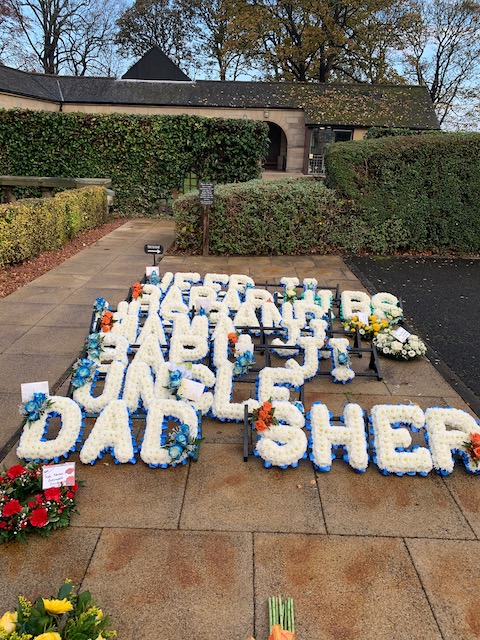
Those touching displays that mean so much have a very short life. Before the next service begins, most will be lined up in day order at the side of the chapel alongside row upon row of previous MUMs, NANAs and GRANDADs. There they will remain for no more than three more days before being unceremoniously dumped in landfill, because the chemical foam from which their frames are made – and from which it is too time consuming to extract them – is toxic. There has to be a better way.
Flowers have been part of funerals even before humans came into existence. The oldest burial site so far discovered is the Shanidar Cave in Iraqi Kurdistan, where the bodies of ten Neanderthals buried somewhere between sixty and ninety thousand years ago were excavated in the 1950’s. A pollen expert, Arlette Leroi-Gourhan, recovered clumps of spores close to one of the skeletons which gave rise to the idea that flowers had been laid on the body and that in itself was enough to make palaeontologists realise that the Neanderthals were not the bone-headed brutes of popular legend, but much closer to present day humanity than had ever been imagined.
Flowers may first have been used to mask the smell of a decomposing corpse, but over time, they took on more symbolic meaning, one that by the middle ages was widely understood by a largely illiterate population.
Although the congregations praying in the frescoed churches of Catholic Europe weren’t allowed to read the word of God, they were encouraged to read the paintings on the walls in which they could understand the meaning not only of the flowers, trees and other plants, but the animals, birds and everything else in the natural world.
To them, the lily was a symbol of purity and virginity, the strawberry of perfect righteousness, and the evergreen ivy, fidelity and eternal life. That symbolism was largely inherited from the Greeks and Romans to whom roses symbolised triumph, just as they do today when they’re presented to a winning actor at the Oscars.
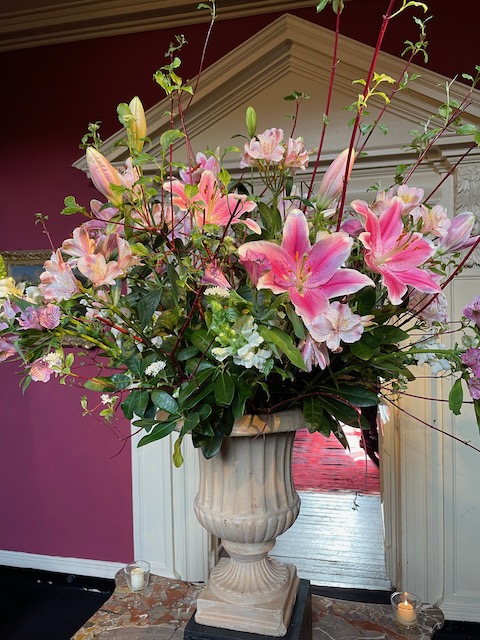
Few of us are aware that the palm leaves which florists so skilfully weave through the lilies on the casket spray once signified victory to the Greeks, or martyrdom to early Christians. The subtleties of the language of flowers are lost to us, which makes the role of the florist very important.
Lorraine Graham started her company twenty years ago: her daughter Tess now works alongside her. She told me that creating displays for funerals accounts for almost half her business. She told me that even though most funeral announcements these days say, ‘family flowers only’, we still spend more money on flowers here in the UK than we do on music, which is an extraordinary thought.
The global trade is worth more than £10 billion and 80% of the blooms we buy here in the UK are grown in the Netherlands, although the roses and carnations have usually been flown in from Kenya: remarkably it’s five times less energy intensive to grow them on the equator and fly them to Europe than it would be to grow them in heated greenhouses in Holland.
Lorraine says that some of her clients are very clear about what they want, but others come to her looking for advice: “it’s not like the old days when you could only have white lilies or a wreath at a funeral,” she told me. “Today anything goes!”
Lorraine trained privately before entering the industry and admits that although she used to know what every flower meant, she’s not sure she can remember them all now. “Most of their meanings are about friendship and love. Roses are far and away the most popular, but if we’re making up an arrangement, we usually suggest two or three others, unless it’s a very distinguished flower like a lily: then you’d just have lilies and greenery and keep it plain and simple.”
She’s very clear about why flowers are still such an important part of every funeral.
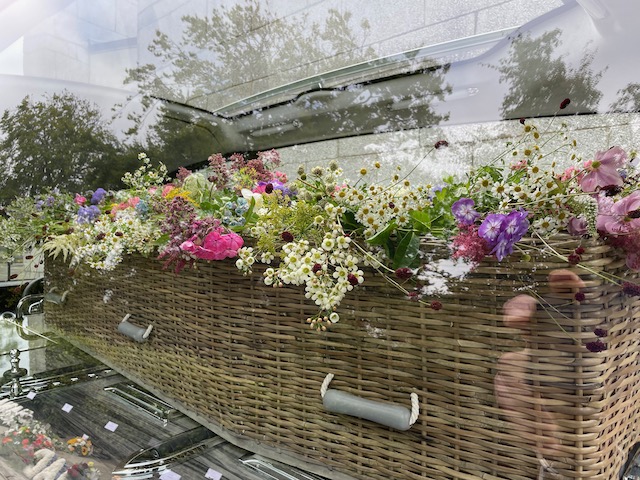
“A coffin on its own is very cold and it’s quite scary. Most people don’t like to think about death at all, so the more flowers you have around a coffin the better: it gives people a chance to look at something else, something beautiful and I think it makes it a bit easier for families to accept that their loved one is inside it. Flowers are comforting and it means a lot to the bereaved that they make a ‘nice show’, because arranging the flowers is the last thing they can do to show their love.”
“We go out of our way to do what our customers want. A casket spray takes a good hour or more to make up, plus all the work you have to do beforehand to prepare it: we’d never send anything out of the shop that we wouldn’t be happy with ourselves.”
“The casket spray is the focus of every funeral, and it’s usually given by the partner or the children of the departed. These days, it’s often the only arrangement: more and more people are choosing now to give money to charity rather than ‘waste it’ on flowers.”
Not all cultures allow flowers at funerals. Judaism forbids them, as does Islam. At Hindu funerals, mourners bring offerings of fruit instead, but in the wider western world, it’s likely that flowers will remain an integral part of a funeral: at a time when we find it painful to speak, flowers silently do that for us, expressing our grief, our sympathy and our love.
Lorraine said, “People often ask us to make something that reflects the life of their loved one, so we’ve made boxing gloves and musical instruments, pints of beer and cocktail glasses, and even a pair of stiletto heels for a lady who loved her shoes!”
“A few months ago, a friend of mine’s niece died at the age of sixteen – she had been ill for a long time, so it was very sad. Her family loved her so much and they wanted to show that in the flowers, so because she’d always been very glitzy and very glam, we created a blue sky for her, filled with a rainbow of yellow, green and red roses. Her family absolutely loved it because they felt it was just who she was, and that’s what flowers do. They show love, and they reflect people’s personalities.”
“We build relationships with our customers over the years. When Dad dies and then a few years later mum dies too, people come back and say ‘I want the exact same thing for my mum as my dad had: just different colours’. It’s lovely and we actually get very attached to people. I have several lovely friendships with people who started out as my customers that have lasted for many years. People know they will get something different from us, something special, not just something picked from photos in a book. And that’s important.”
“You can never really tell what people are going to want. You get the hard-working man who comes in, the wee old guy who’s lost his wife, and I’ll ask him ‘what were her favourite colours?’ and ‘what flowers did she like?’ and if they don’t have a clue, I’ll suggest things. I can tell they don’t have lots of money, but if I ask how much they’d like to spend, nine times out of ten, they’ll say, ‘doesn’t matter hen. Whatever it costs: she was my wife and I loved her,’ and I think that’s so, so nice!”
“On the other hand, you get people who’re very wealthy – very wealthy – and they’ll say, ‘well I want orchids and calla lilies’ – all the most expensive flowers. But when I say, ‘we start from a hundred and fifty pounds’ they say ‘Ooh – no, no, no, no, no! I was thinking about fifty pounds…’ You live and learn.”
“We do sometimes get asked to do funeral flower letters and although they’re not my favourite thing and they’re very time-consuming, we put a lot of effort into making them more interesting. Each letter takes about three bunches of basing chrysanthemums: you have to cut each flower individually and you have to cut their stems very short too.”
“Until a few years ago, you had to make up the frames yourself from individual letters as well, which took ages but nowadays they’re pre-fixed so it’s a lot easier. The largest word that will fit along the side of a hearse has seven letters, so you can have ‘grandad’ or ‘grandma’ but although they’re one word, the frames come in two parts so they can be taken apart, carried and reassembled easily. We always make them a bit different – we’ll put a particular flower arrangement in each letter for example, and we’ll customise them to make them a bit more original.”
The sentiments conveyed by floral tributes are not always conventional and on occasion they can be a wonderful opportunity for dark comedy.
When ‘The Queen of the Shoplifters’ Shirley Pitts was buried in 1992, a 6ft-long display spelled out ‘GONE SHOPPING’ and ten years later, when the London gangster Charlie Richardson was cremated, alongside ‘DAD’ and ‘UNCLE’ there was an unusual floral tribute that read ‘240 DC’.
Richardson, whose infamy rivalled that of his deadly enemies The Kray Twins, served 14 years in Parkhurst for fraud, extortion, assault and grievous bodily harm, and the tribute was a sly reference to the voltage of the hand-cranked, WWII army generator he and his henchmen had used to torture their victims.
Even after his release from the maximum-security prison, Richardson continued to deny that he had ever attached electrodes to anyone’s testicles, but the message spelled out in white chrysanthemums suggests he may have been being somewhat economical with the truth…
Funeral flowers may allow us to spell out our feelings, but they depend on an unsustainable medium: floral foam.
Invented in the 1950’s, floral foam looks like moss, and florists love it for its convenience. It can hold up to fifty times its own weight in water, it keeps flowers fresh for up to 12 days, it’s light, easy to shape, and easy to transport. Floral foam is undeniably ingenious, but it’s also undeniably toxic. Although it looks as green as the moss it imitates, it’s actually a composite of formaldehyde, phenol and carbon black, and it’s not biodegradable. Worse still, when it does break down, it becomes a micro-plastic, which as we now know is a major cause of environmental damage.
In 2021 The Royal Horticultural Society banned it from all its shows, asking its exhibitors instead to use alternative materials: pebbles, sand, gravel or clay as a bed; twigs of willow or chicken wire as a support and real moss – just as our forebears would have done in the past.
There’s every possibility that some clever scientist is already trying to invent a more sustainable material for florists to use, but I don’t expect floral foam to disappear from funerals any time soon. However, thanks to David Attenborough, Greta Thunberg and our growing awareness of environmental issues, things are already changing.
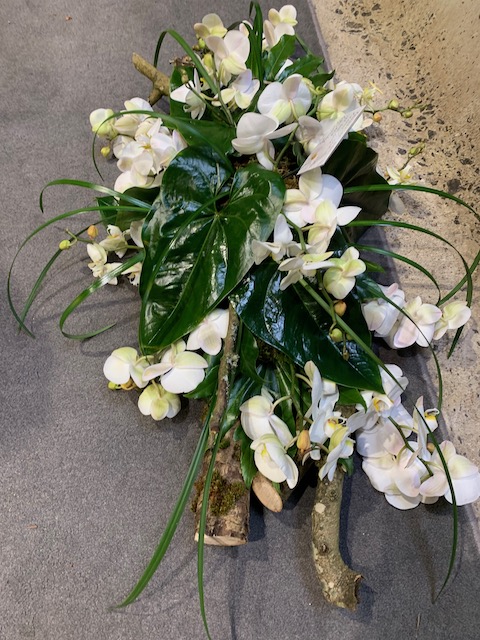
As Lorraine told me, “More and more people are now asking us to prepare living plants for funerals, and I’m so pleased because they’re not just going to waste. They can be planted on the grave or in the family’s garden and that’s great because that way, they really do live on.”
“Another thing that’s definitely changed over the last few years is that the flowers aren’t seen as being just for the funeral itself: they’re likely to have a second life. The family may want to take them to the care home or the hospice or the hospital ward where their loved one spent their last days or weeks where they can be rearranged into smaller displays and I always encourage my clients to do that.
I know that the Marie Curie Hospice are more than happy to take our arrangements after the ceremony. Every day, they use them to make up small bunches of flowers to brighten up their patients’ rooms and I think that’s a fantastic idea.”
There are other imaginative ways in which flowers can their part in remembering a life. Some families are already choosing to give packets of seeds to mourners as they leave the funeral and in doing so, consciously or not, they are drawing on very old traditions.
In Ancient Greece, parsley seed was scattered over graves, drawing on the legend of snake-bitten Opheltes, from whose blood the herb was believed to grow. By the 16th century, the herb rosemary was being thrown into graves to help the dead find their way to the afterlife, which is why in ‘Hamlet’ Shakespeare has Ophelia say, ‘There’s rosemary, that’s for remembrance – pray you, love, remember.’
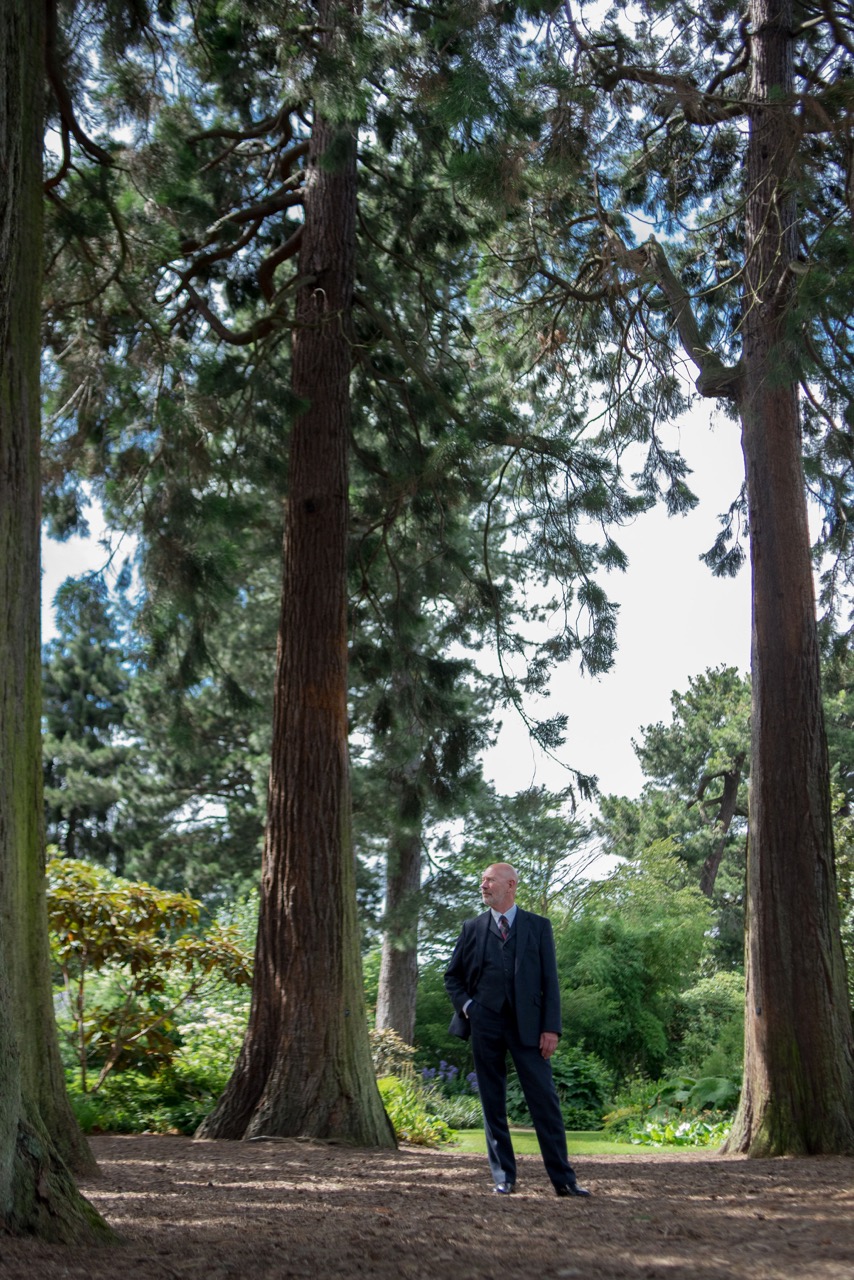
Another way to ensure memories live on is to plant a tree or shrub. Trees combat climate change by locking up CO2 and removing it from the atmosphere so for some years now, I and my Celebrate People colleagues have been planting trees through a charity called Trees for Life, who are restoring the ancient Caledonian Forest by planting native varieties like rowan, birch and Scots pine to create a home for wildlife and a forest for the future.
It’s a small gesture that’s symbolic as well as practical because like flowers, trees have their own meanings. Birch signifies rebirth and renewal; rowan gives protection, and pine is a symbol of endurance as well as hope in adversity. Planting a tree is a meaningful response to loss: a way of affirming our belief that love will live on, and that life will come out of death.
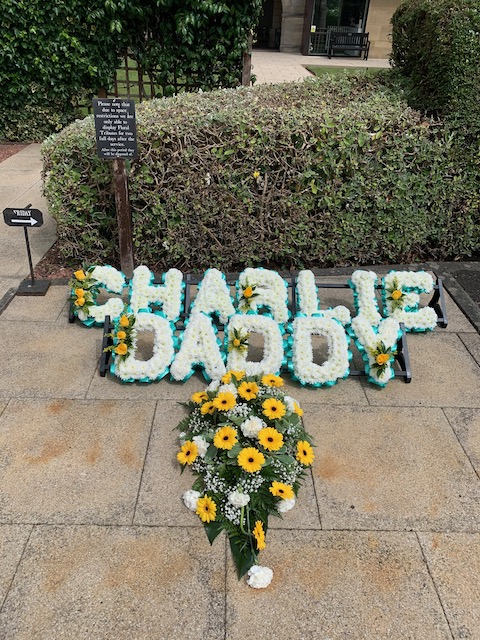
0 Comments Leave a comment